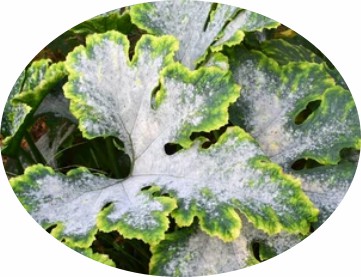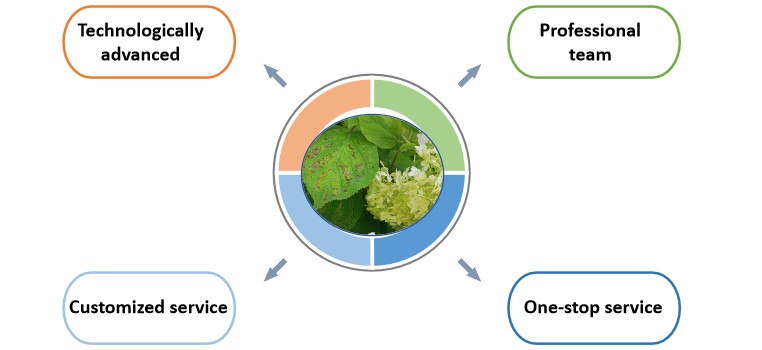Fungal diseases pose a major hazard to global agriculture, severely affecting crop yield and quality and seriously threatening food security. While traditional chemical pesticides have a short-term effect on fungal diseases, their long-term use can lead to pathogen resistance, environmental pollution, and other problems. Lifeasible is an industry leader in agricultural research, and we are committed to solving the most prominent and complex issues in agricultural research. We rely on our advanced technology platform and rich service experience to provide reliable solutions for controlling fungal diseases in agricultural production.

| Common fungal diseases |
|
| Common fungal causes |
|
By modulating the structure of the soil microbial community, we can enhance its ability to inhibit pathogenic fungi. Certain bacterial populations in the soil can inhibit the growth of pathogenic fungi. Based on the soil microbial community structure, we formulate and apply specific microbial preparations or adopt reasonable agricultural management measures to optimize the structure of the soil microbial community and enhance its inhibitory ability against fungal diseases.
We utilize synthetic biology technologies to design and construct microbial systems with specific functions. For example, we design and synthesize microbial engineering bacteria that can efficiently express sRNA to apply RNA interference technology. In addition, we utilize synthetic biology technologies to develop microbial agents with multiple functions that can effectively inhibit fungal diseases and promote robust plant growth.
We have established a comprehensive microbiome technology platform to study the composition and function of soil microbial communities and reveal their relationship with fungal diseases by utilizing microbiome technology. For example, through high-throughput sequencing and microbiome analysis, we can help researchers better understand the interactions of different microbial populations in soil and their inhibitory mechanisms against pathogenic fungi, thus providing scientific guidance for microbial community regulation and fungal disease prevention and control.
 Fig.2 Our service advantages. (Lifeasible)
Fig.2 Our service advantages. (Lifeasible)
Lifeasible provides reliable microbial solutions for fungal disease control based on our advanced technology platform and experienced team of experts. Our microbial services for fungal disease prevention and control are characterized by high efficiency, precision, and sustainability, which can provide a strong guarantee for the green development of agriculture and food security. If you are interested, please feel free to contact us.
Lifeasible has established a one-stop service platform for plants. In addition to obtaining customized solutions for plant genetic engineering, customers can also conduct follow-up analysis and research on plants through our analysis platform. The analytical services we provide include but are not limited to the following:
Get Latest Lifeasible News and Updates Directly to Your Inbox
Adaptive Evolutionary Mechanism of Plants
February 28, 2025
Unraveling Cotton Development: Insights from Multi-Omics Studies
February 27, 2025